Resources
Blog Authors
Blog Categories
Silver Sponsor
Resource Blogs
Reducing an Organization's Risk and Liability by Addressing the Entry
Mitigating risk and liability starts with controlling access to the entry points of a facility. In fact, a regulated mandate that is of major concern to the security professional is the requirement to restrict physical access to a building. Several regulatory standards specifically call out tailgating as a clear violation of compliance.
read more -->

Security Entrances and Active Shooter Preparedness
It’s unfortunate that one of the biggest topics in our industry today is “active shooter.” Once a rare event, it’s now in the news almost weekly and sometimes daily. To an organization, the impacts range from death and property damage to long-term disruption of business continuity.
Organizations today have to take the threat seriously and deploy a number of tactics to get ahead of an active shooter event. These strategies include, but are not limited to, conducting more effective employee screenings and providing counseling; preparing emergency kits; performing safety drills on a regular basis; and rolling out physical security measures to deter, detect or prevent an active shooter from infiltrating and moving throughout the building.
read more -->

Off the Beaten Path at ISC West
This year at ISC (the International Security Conference and Exposition), I was determined to try to see the latest iStechnologies hiding in the nooks and crannies—literally! I visited booths in the back, the basement, small kiosks hidden inside larger vendor books, and throughout the Emerging Technology Zone.
In case you missed the show, I’ll round up some of the best new technologies and companies to keep an eye on. Read more.
read more -->

Voice Identification: Not Just for the Chatty Kathy
Learn the meaning of micro-articulometry. A term for the technology used to deduce human profile parameters, employing Artificial Intelligence (AI) to discover micro-patterns (or micro-signatures) contained in speech. And how this technology is coupling with security.
read more -->
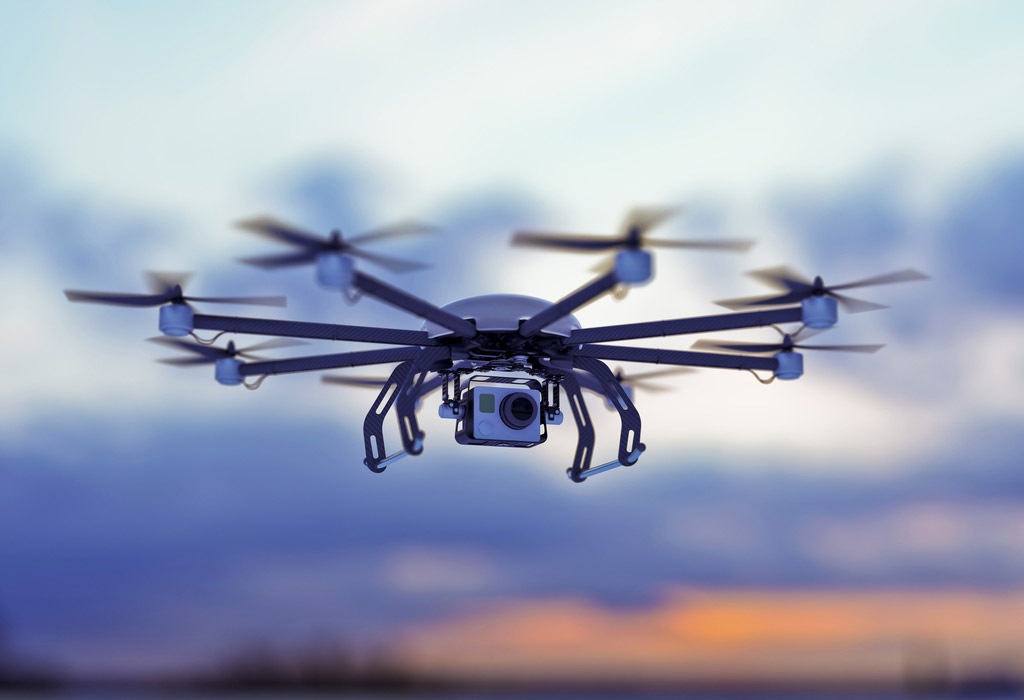
Droning On About Technology
Drones are part of the future landscape of security technologies and security threats. In fact, drones are projected to increase from 2.5 millions units in 2016 to up to 7 million by 2020, according to the FAA. But will drone technology be helpful or harmful (or both) to the security industry?
read more -->
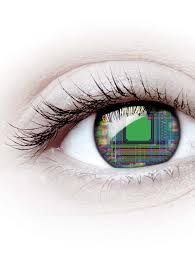
Neuromorphic Image Sensors Inspired By The Human Eye
New research shows machines can capture moving images more efficiently through prioritizing dynamic parts of the scene as light changes. Read more about this advanced neuromorphic technology and how it is impacting the security industry.
read more -->

The State of Security Video Analytics
Examines the current state of video analytics technology
& considerations for modern deployment.
read more -->

PSIA Primer
In my last column, I provided thoughts on the ONVIF specification effort, which was initiated in 2008 by Axis, Bosch, and Sony. This month, I'll turn my attention to another effort to drive system interoperability. Also founded in 2008 by over 20 companies, including Cisco, Honeywell, GE (now UTC), and Tyco, that organization is the PSIA, short for the Physical Security Interoperability Alliance (www.psialliance.org). Although neither have the power of a true standards making organization, I believe that either would claim success if their efforts became de-facto standards and widely adopted by both manufacturers and specifiers.
read more -->

The Inside Scoop on ONVIF
ONVIF was originally organized as the Open Network Video Interface Forum in 2008 by Axis, Bosch, and Sony. With IT standards in mind, these companies realized that standards for devices and clients to communicate and operate with a high level of functionality would be vital to the long term health of the industry. Today, ONVIF has 31 Full Members, an additional 21 Contributing members, and another 454 User Members (see the ONVIF web site www.onvif.org.) The initial focus was on video systems.
read more -->

PSIM Possibilities
In the December 22, 2014 Fortune Magazine article, 'How to Invest in the Internet of Things', the author, Erin Griffith states,'For now the potential of the Internet of things radically outpaces the reality. Research firm Gartner predicts the hype will soon collapse into a 'trough of disillusionment,' followed by a 'slope of enlightenment,' and then, eventually, a 'plateau of productivity.' Notes Tim Herbert at CompTIA: 'We often overestimate a technology's impact in the short term and underestimate it in the long term.'' This reflects my own thinking on the evolution of impactful technologies, and we have two great examples of this in physical security - video analytics and PSIM. Didn't we see all of the early hype surrounding video analytics dissipate into disillusionment, only to witness the technology become mainstream, reaching the 'plateau of productivity' in cameras and VMS systems? PSIM also had great early promise with upstart companies tackling enormous information management problems, only to see many of those acquired (think Verint, NICE, Tyco) and their technologies evolve into broader, more capable product offerings.
read more -->

Video Vulnerability Alert: Don't Get Shellshocked
In Sept. 2014, a vulnerability known as Shellshock (also known as Bashdoor) was discovered and disclosed. And that's potentially big news for organizations who operate, maintain or otherwise use Linux-based security equipment - which can now be considered vulnerable to hackers.
read more -->

The Latest in Lighting and Power
Raytec (www.rayteccctv.com) has offered network controllable lighting for about two years, and a new wrinkle I recently noticed was powering the light via 'high PoE'. Two not-so-new innovations make this possible - high efficiency LED light sources and high PoE levels which go beyond the IEEE 802.3at PoE+ standard.
read more -->

You Can't Kill Coax
It's funny how certain legacy security technologies seem to keep hanging on long past the handwriting of their demise is on the wall or find new life by being repurposed. A large number of analog cameras have shipped over the last 5 years, though their share of the market has steadily declined. Their close cousin, analog-to-fiber optic transceivers, have also stubbornly resisted extinction. But while these electronic product products are sure to go sooner or later, old transmission media doesn't have to. It's easy to see that fiber optic cable can be repurposed to carry any information for which it has the capacity. It's more of a stretch to think the same about coax, but coax lives on. Why? Because it's in place and it has high bandwidth - generally higher than twisted pair.
read more -->
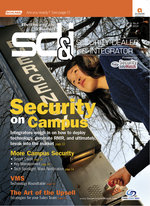
Lights, Camera..Activity
Newark Airport got quite a bit of press in February for its deployment of 171 LED light fixtures that form the backbone of a new wireless network that would not only control lighting, but also transmit data from security devices. The fact that surveillance cameras and activity sensors were to be part of this network caused a great deal of consternation - which tells me how little-informed the mainstream media, not to mention the public in general, really is when it comes to the potential of security technology.
read more -->

Raising the Bar(s) in Wireless
One of the consistent trends we’ve seen in networking is the continuous increase in network speeds. In wired networks, more devices are appearing with 10 Gbps capability, while 40 Gbps and 100 Gbps equipment is on the horizon.
read more -->

Avoid PoE Woe
One of the really nice innovations in the industry has been the adoption and widespread availability of Power over Ethernet (PoE)-enabled devices, powered over the same Cat 5e (or better) cable carrying Ethernet. It is so easy that the technology can be taken for granted and important considerations overlooked.
read more -->

Laser Tag
Remember the days of the simple photo-electric cell? Using either a transmitter-receiver pair or a single TX/RX with a retro-reflector, the interruption of an IR beam would trigger an alarm, stop a process, or simply act as an input to another process. We have come so far!
Today, using laser technology, a beam can be emitted into free space, reflect off an object, and, upon returning, provide the input to calculate distance of the object based on its flight time. Compound that with the fact that the beam is scanning continuously over a pre-determined arc travelling at 386,000 miles per second and you’ve got something interesting. Some refer to this technology as LIDAR (Light Detection and Ranging), based on the same concept as RADAR, but using laser light instead of radio waves. Because laser light is higher in energy and shorter in wavelength than radio waves, it reflects better from non-metallic objects and provides mapping advantages over RADAR.
read more -->

Video at your Service
The major product sectors of the security industry seem to have all followed a similar progression: analog (or low-speed serial), to digital, to IP, and now, to the cloud. The security industry may be lagging behind the IT world in terms of standards, features and product applications; however, they are both traveling the same path — and it leads to the cloud.
Just look at the video market: VCRs are extinct, hybrid DVRs bridge the analog and digital worlds, and NVRs and dedicated or shared storage equipment reside on networks, accessed by an array of video management products. Thus, off-site video storage and monitoring, implemented through the Internet (the “cloudâ€), is becoming a real business. IMS Research points out that the Video Surveillance as a Service (VSaaS) market was approximately $500 million in 2011 and could reach $1 billion by 2014.
read more -->
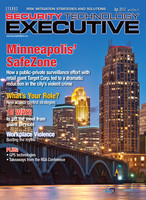
Positioning GPS
From the first time I used a Hertz GPS navigation system in lieu of a paper map on the front passenger’s seat, I have found the technology to be an almost indispensable tool. Its adoption over the last 10 years has been remarkable and, for many, a must-have feature in cars and phones. Not surprisingly, GPS has security applications — and vulnerabilities. GPS is a satellite-based navigation system made up of a network of 24 satellites circling the earth twice daily at about 12,600 miles altitude. GPS satellites transmit 50-watt signals (@ 1575.42 MHz in the UHF band for civilian use) which GPS receivers use to determine time of transmission and, using the signal speed (nearly the 186,000 miles per second speed of light), calculate a distance to each one seen. With three satellites in view, latitude and longitude (2-D) can be derived; and altitude can be calculated (3-D) when four or more satellites are visible. Many GPS units show derived information such as direction and speed, calculated from position changes.
read more -->
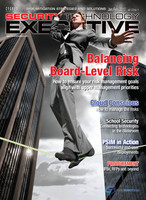
In-Depth on NFC
Much has been written about Near-Field Communications (NFC) for consumer transactions; however, NFC is still so new that I want to address it in a broader security context and, hopefully stimulate some creative thinking. In my opinion, multiple security applications are waiting to be developed.
NFC is an RFID standards-based wireless technology, operating at 13.56 MHz over extremely short distances (less than 2 inches). When designed into a smartphone, it is capable of enabling data transfer between the phone and a companion device. The Nokia model 6131 was the first NFC phone, introduced in 2006. The predominant application driving this technology has been electronic payment as a follow-on to contactless smart cards, and manufacturer interest has been significant, as witnessed by the growth of the NFC Forum (www.nfc-forum.org) — founded in 2004 by Nokia, Philips and Sony — to more than 135 members today.
read more -->

What's New in Video Storage
There is arguably no higher cost component in a video surveillance system than video storage equipment. Coupled with the proliferation of CCTV cameras, the ability of network-based video systems to enable easy viewing of live and stored video at multiple locations has driven video storage to higher levels of importance and utility. There is no doubt in my mind that not only will the number of stored bytes of video data continue to rapidly increase, but also that offsetting advancements in a number of areas will keep costs reasonable.
Start with the cost of the storage media itself. In 1950, the cost per megabyte of storage was approximately $10,000. In the early 1980s, that cost had fallen to less than $500; by 1990, under $10; and by the late 1990s, about a penny. In 2001, we saw the cost per gigabyte less than $5; under $1 in 2004, and less than a dime in 2010. Today, you can purchase a 3 TB SATA drive from Amazon for $159. Granted, these are only drive costs and do not reflect the hardware and software around them to make them work, but the downward trend in raw storage costs continues. This will only fuel the appetite to store more.
read more -->

Analyzing Analytics
Video analytics as a security technology has been hyped for the past several years, with the widespread view that it has been oversold, overpriced, misapplied and simply not ready for prime time. But recent advancements may change that view.
read more -->
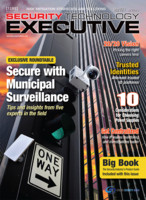
New Alternatives in Ethernet Media
As Ethernet networks have moved to becoming the norm for IP-based transmission of video, audio and data signals, I wanted to examine some alternatives for transmission.
By now, most of us are familiar with common Ethernet media — Cat 5e, Cat 6, fiber optic cable, and WiFi. Today, Cat 5e and Cat 6 are the baseline means for Ethernet transmission, at least for horizontal cabling to the wiring closet. This cable is relatively inexpensive and well-understood.
But what if running new copper or fiber media is problematic, due to facility or budget constraints, and the conditions for wireless are not right for reliable deployment? Alternatives exist.
read more -->
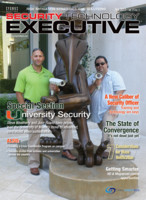
Power Play
What comes to mind when you ask “What do CCTV, access control, intercoms, doors, contact closure modules all have in common?†One possible answer is IP connectivity. Now, you can add the ubiquitous power supply to the list. One company at least — Life Safety Power — has made IP-based features a signature element of its product line, and, given the likely advantages, I expect more to follow.
Form C contacts have been around since the dark ages — extensively used, reliable and necessary, a bit like analog video in the surveillance industry. It is well within today’s design technology to pull critical data from power supply circuitry. In addition to AC input or DC output failure and low battery supervision, there are numerous other monitoring possibilities, including actual voltage levels and their variability over time; current draw per output circuit; actual battery voltage and trend data; charging current; battery age and history; fault history and tamper events. All could be reported via SNMP or e-mail. Since power supplies are the lifeblood of most devices, timely e-mail and text reporting of device status can resolve problems quickly or prevent problems from occurring through pre-emptive action.
read more -->

Thermal Imaging a Hot Technology
Infrared (IR) energy for sensing and imaging - either as a complement or as an alternative to visible energy - has for years been used in many applications, including physical security, military and law enforcement. But technological advances in both active and passive infrared are bringing the technology closer to the mainstream.
read more -->

